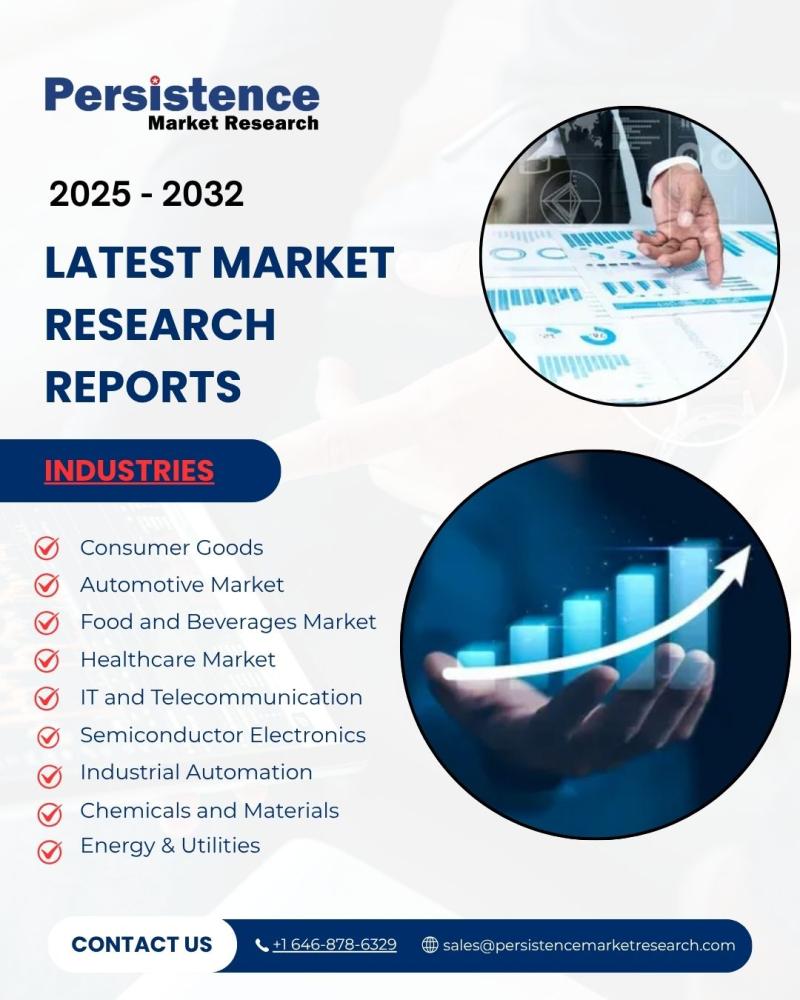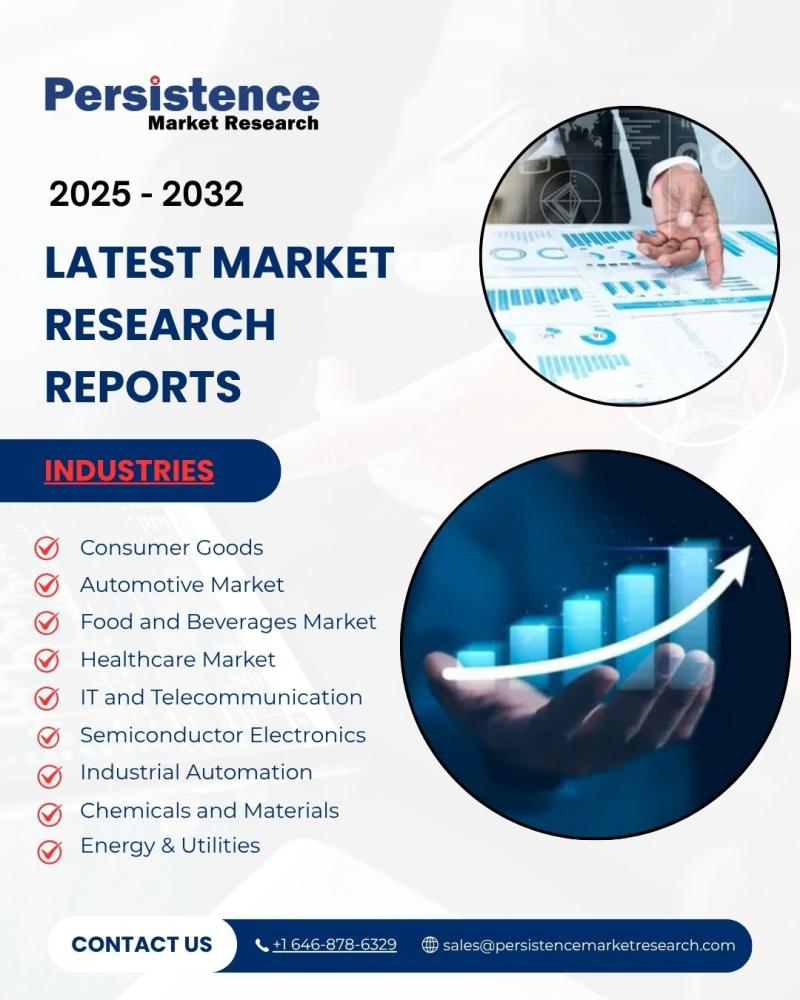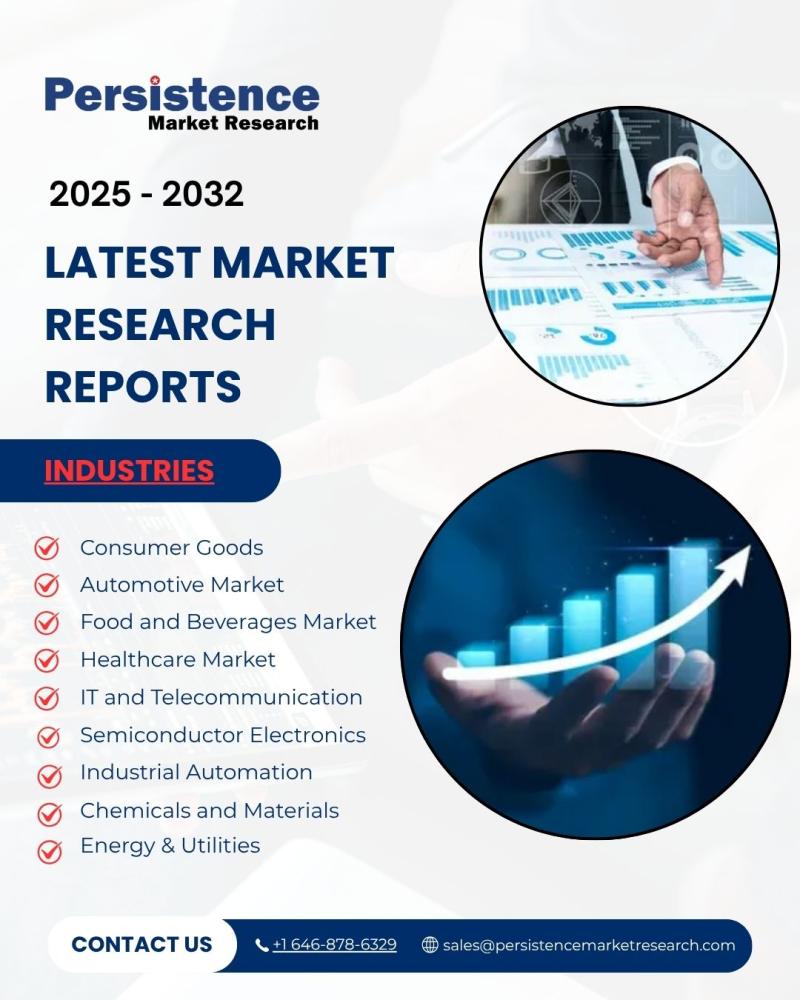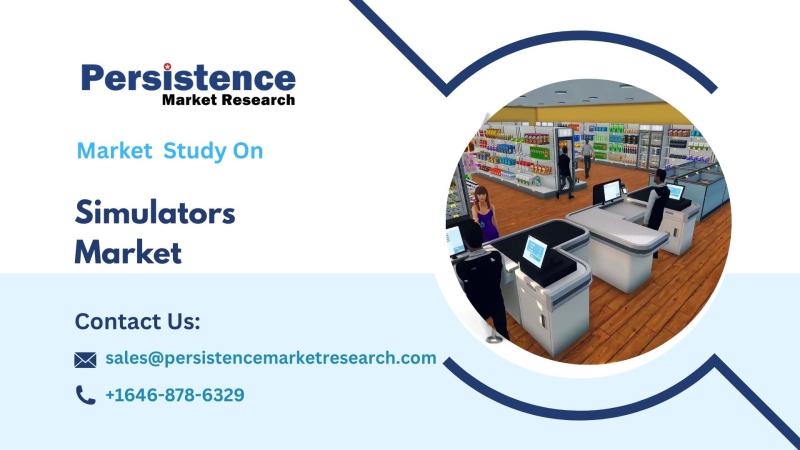Press release
Simulators Market Transforming Training and Operational Efficiency Across Industries with Advanced Simulation Technologies
Overview of the MarketThe global simulators market is witnessing robust growth as organizations across sectors increasingly adopt simulation technologies to enhance training, operational efficiency, and decision-making capabilities. Valued at USD 19.4 billion in 2024, the market is projected to reach USD 32.5 billion by 2032, growing at a CAGR of 6.8% during the forecast period. Simulators are widely used across aviation, defense, healthcare, automotive, and industrial sectors to provide realistic, risk-free training environments. Their adoption is being driven by the need to reduce operational risks, optimize performance, and lower training costs while ensuring safety and compliance standards are met.
Get a Sample PDF Brochure of the Report (Use Corporate Email ID for a Quick Response): https://www.persistencemarketresearch.com/samples/31052
Among various segments, flight simulators lead the market due to their extensive use in pilot training programs and commercial aviation expansion globally. In terms of geography, North America holds the dominant position, primarily driven by significant investments in defense and aviation sectors, advanced technological infrastructure, and early adoption of simulator-based training solutions. Europe and Asia-Pacific also present substantial growth opportunities, driven by increasing investments in healthcare, defense, and industrial training applications.
Key Highlights from the Report
• The market is expected to grow from USD 20.5 billion in 2025 to USD 32.5 billion by 2032.
• Anticipated CAGR of 6.8% from 2025 to 2032.
• Flight simulators dominate the product segment due to extensive aviation training demand.
• North America leads in market share due to advanced infrastructure and defense investments.
• Healthcare and automotive sectors are emerging as high-growth end-user segments.
• Increasing integration of AI and VR/AR technologies is enhancing simulator realism and effectiveness.
Market Segmentation
The simulators market can be segmented based on product type, end-user, and application.
Product Type: The market comprises flight simulators, driving simulators, marine simulators, medical simulators, and industrial simulators. Flight simulators remain the largest segment due to global pilot training programs and commercial aviation growth. Driving and marine simulators are gaining traction for transportation and defense applications, while medical simulators are expanding due to increasing adoption in surgical training and healthcare education. Industrial simulators are used in process industries for operational training and safety compliance.
End-User Industry: Aviation, defense, healthcare, automotive, and industrial sectors are the primary users. Aviation and defense sectors are major contributors due to the high requirement for training without operational risks. Healthcare has emerged as a key growth sector, driven by increasing demand for simulation-based medical education and training programs. Automotive companies are leveraging simulators for vehicle design testing, driver training, and autonomous vehicle development.
Application: Simulators are applied for training, operational efficiency, safety enhancement, and skill assessment. Organizations are increasingly integrating simulators into structured training programs to reduce accidents, improve decision-making, and enhance workforce competency in complex operational scenarios.
Read More In Detail:https://www.persistencemarketresearch.com/market-research/simulators-market.asp
Regional Insights
North America: Leads the global simulators market due to high adoption of advanced simulation technologies, investments in aviation and defense, and presence of major technology providers.
Europe: Growth is fueled by stringent safety standards, investments in defense and healthcare training, and increasing use of VR/AR-enabled simulators.
Asia-Pacific: Expected to witness significant growth due to rapid industrialization, expansion of commercial aviation, rising healthcare investments, and increasing government initiatives supporting simulator adoption.
Middle East & Africa: Market expansion is driven by defense modernization programs, infrastructure development, and adoption of advanced training solutions in industrial sectors.
Market Drivers
The key drivers of the simulators market include the rising need for risk-free training, cost reduction, and operational efficiency. Industries are increasingly turning to simulators to provide safe, controlled environments where trainees can learn and practice without exposure to real-world risks. Advancements in virtual reality (VR), augmented reality (AR), and artificial intelligence (AI) technologies enhance the realism of simulation-based training, making it more effective and scalable. Additionally, stringent regulatory requirements and the growing focus on workforce competency are propelling simulator adoption across aviation, healthcare, and industrial sectors globally.
Market Restraints
Despite growth potential, the market faces challenges such as high initial investment and complex implementation requirements. Simulator systems often require significant capital expenditure, sophisticated software, and technical expertise for operation and maintenance, which may hinder adoption among small and medium enterprises. Moreover, the need for regular updates and integration with emerging technologies adds to operational complexity. Limited awareness in some emerging markets about the benefits of simulation-based training may also restrict market expansion.
Market Opportunities
The simulators market offers substantial opportunities for innovation and expansion. Increasing government and private sector investments in defense, healthcare, and industrial training are creating new demand for high-fidelity simulation solutions. Integration of AI, VR/AR, and cloud-based platforms allows providers to offer more immersive, flexible, and cost-effective solutions, opening doors for new applications across emerging sectors. Moreover, the growing trend of remote training and e-learning presents opportunities for simulator providers to expand into digital and connected training ecosystems, enhancing accessibility and scalability.
Do You Have Any Query Or Specific Requirement? Request Customization of Report:https://www.persistencemarketresearch.com/request-customization/31052
Company Insights
Key players operating in the simulators market include:
• CAE Inc. - A leading provider of flight, healthcare, and industrial simulators.
• L3Harris Technologies - Specializes in defense and aviation simulation solutions.
• Rockwell Collins (Collins Aerospace) - Offers a range of flight and training simulators.
• Siemens AG - Provides industrial and process simulators with advanced automation integration.
• Kongsberg Gruppen - Known for marine and defense simulation solutions.
Recent Developments:
• Launch of AI-enhanced flight simulators enabling adaptive training programs for pilots.
• Expansion of healthcare simulation centers in Asia-Pacific to improve surgical and clinical training capabilities.
Conclusion
The simulators market is poised for significant growth, driven by the increasing need for safe, cost-effective, and efficient training solutions across multiple industries. Technological advancements, particularly in AI, VR, and AR, are enhancing the realism and effectiveness of simulators, enabling organizations to provide comprehensive training programs while minimizing operational risks. North America continues to lead the market, while Asia-Pacific offers high growth potential due to industrialization and increasing investments in healthcare and aviation sectors. With the market expected to grow from USD 20.5 billion in 2025 to USD 32.5 billion by 2032 at a CAGR of 6.8%, simulators are becoming an essential tool for workforce training, operational excellence, and strategic decision-making across industries.
Related Reports:
https://www.persistencemarketresearch.com/market-research/construction-equipment-rental-market.asp
https://www.persistencemarketresearch.com/market-research/turbo-compressor-market.asp
https://www.persistencemarketresearch.com/market-research/turbidimeter-market.asp
https://www.persistencemarketresearch.com/market-research/metal-detectors-market.asp
Persistence Market Research
G04 Golden Mile House, Clayponds Lane
Brentford, London, TW8 0GU UK
USA Phone: +1 646-878-6329
UK Phone: +44 203-837-5656
Email: sales@persistencemarketresearch.com
Web:
https://www.persistencemarketresearch.com
About Persistence Market Research:
At Persistence Market Research, we specialize in creating research studies that serve as strategic tools for driving business growth. Established as a proprietary firm in 2012, we have evolved into a registered company in England and Wales in 2023 under the name Persistence Research & Consultancy Services Ltd. With a solid foundation, we have completed over 3600 custom and syndicate market research projects, and delivered more than 2700 projects for other leading market research companies' clients.
Our approach combines traditional market research methods with modern tools to offer comprehensive research solutions. With a decade of experience, we pride ourselves on deriving actionable insights from data to help businesses stay ahead of the competition. Our client base spans multinational corporations, leading consulting firms, investment funds, and government departments. A significant portion of our sales comes from repeat clients, a testament to the value and trust we've built over the years.
This release was published on openPR.
Permanent link to this press release:
Copy
Please set a link in the press area of your homepage to this press release on openPR. openPR disclaims liability for any content contained in this release.
You can edit or delete your press release Simulators Market Transforming Training and Operational Efficiency Across Industries with Advanced Simulation Technologies here
News-ID: 4193066 • Views: …
More Releases from Persistence Market Research

Folding Bicycle Market Valued at US$ 1,043.8 Mn in 2025, Projected to Reach US$ …
The global folding bicycle market continues to demonstrate strong momentum as urban mobility transforms worldwide. According to Persistence Market Research, the market is projected to be valued at US$ 1,043.8 million in 2025, and it is anticipated to expand by US$ 1,754.4 million between 2025 and 2032, registering a CAGR of 7.7% during the forecast period. This surge is primarily fueled by the growing adoption of micro-mobility solutions, technological innovations,…

Global Automotive PCB Market to Reach US$ 10,397.2 Million in 2025, Expanding by …
According to Persistence Market Research, the global automotive PCB market is projected to be valued at US$ 10,397.2 million in 2025, and it is expected to grow by US$ 15,680.4 million between 2025 and 2032, registering a steady CAGR of 6.1% during the forecast period. The automotive industry is undergoing a major technological transformation, and printed circuit boards (PCBs) have become an integral part of this shift. From electric vehicles…

Monoethylene Glycol (MEG) Market to Reach US$ 33.8 Bn by 2032, Driven by Growing …
The global monoethylene glycol (MEG) market is witnessing robust growth, propelled by increasing demand from the packaging and textile industries, coupled with rising consumption of polyester-based products. Monoethylene glycol, commonly known as MEG, is a key raw material used in the production of polyethylene terephthalate (PET) resins, polyester fibers, and antifreeze formulations. It is an odorless, colorless, and hygroscopic liquid derived primarily from ethylene oxide and plays a vital role…

Global Automotive Powertrain Sensors Market to Reach US$ 30.77 Bn by 2031, Expan …
According to Persistence Market Research, the automotive powertrain sensors market is projected to rise from US$ 18.47 billion in 2024 to US$ 30.77 billion by 2031, growing at a CAGR of 7.6% during the forecast period. The market's rapid expansion is driven by the increasing demand for fuel-efficient and environment-friendly vehicles across both developed and emerging economies. Automotive manufacturers are increasingly relying on advanced powertrain sensors to enhance engine performance,…
More Releases for Simulator
Global NIBP Simulator Market Size by Application, Type, and Geography: Forecast …
According to Market Research Intellect, the global NIBP Simulator market under the Aerospace and Defense category is expected to register notable growth from 2025 to 2032. Key drivers such as advancing technologies, changing consumer behavior, and evolving market dynamics are poised to shape the trajectory of this market throughout the forecast period.
The NIBP (Non-Invasive Blood Pressure) simulator market is expanding due to rising demand for advanced medical training tools and…
Gps Simulator Market Size Analysis by Application, Type, and Region: Forecast to …
According to Market Research Intellect, the global Gps Simulator market under the Aerospace and Defense category is expected to register notable growth from 2025 to 2032. Key drivers such as advancing technologies, changing consumer behavior, and evolving market dynamics are poised to shape the trajectory of this market throughout the forecast period.
The GPS simulator market is experiencing significant growth, driven by the increasing demand for accurate navigation and positioning systems…
Global Neurosurgery Simulator Market Size by Application, Type, and Geography: F …
According to Market Research Intellect, the global Neurosurgery Simulator market under the Aerospace and Defense category is expected to register notable growth from 2025 to 2032. Key drivers such as advancing technologies, changing consumer behavior, and evolving market dynamics are poised to shape the trajectory of this market throughout the forecast period.
The neurosurgery simulator market is experiencing steady growth, driven by the increasing adoption of advanced simulation technologies in medical…
Drone Simulator Market
United State: Drone Simulator Market report contains detailed information on factors influencing demand, growth, opportunities, challenges, and restraints. It provides detailed information about the structure and prospects for global and regional industries. In addition, the report includes data on research & development, new product launches, product responses from the global and local markets by leading players. The structured analysis offers a graphical representation and a diagrammatic breakdown of the Drone…
Driving Training Simulator Market Forecast to 2028 - Covid-19 Impact and Global …
Driving simulators are excellent practical and useful educational tools that are used to train drivers across the globe. Development of simulators for the disabled individuals to educate them with hand controls and local road rules is fueling the growth of driving training simulators market. The driving training simulator market is experiencing continuous growth, owing to rise in demand for safety features.
Download Sample Report in PDF Version @ www.theinsightpartners.com/sample/TIPRE00004985/?utm_source=openpr&utm_medium=10387
This report sample…
Patient Simulator Market By Product (Childbirth Simulator, Infant Simulator and …
Industry Outlook and Trend Analysis
The Patient Simulator Market was worth USD 0.86 billion in 2014 and is expected to reach approximately USD 2.99 billion by 2023, while registering itself at a compound annual growth rate (CAGR) of 14.83% during the forecast period. Patient simulators systems are life-like dummies that respond physiologically as though they were alive. They are incorporated with PC programming that enables them to depict normal and strange…
